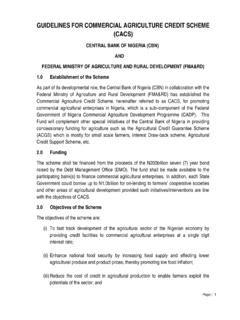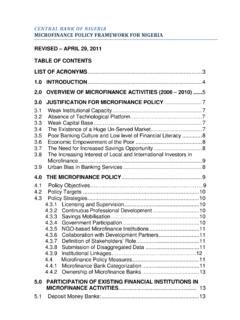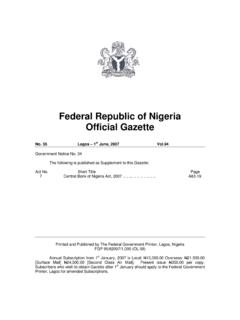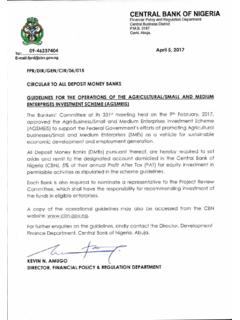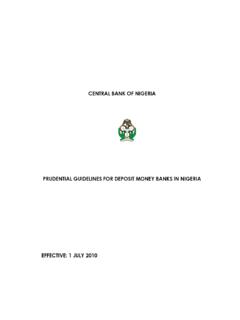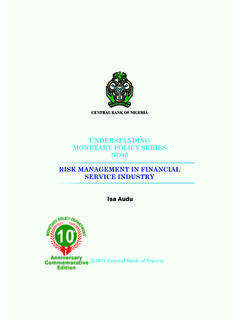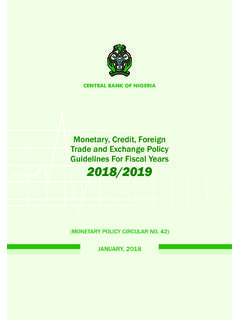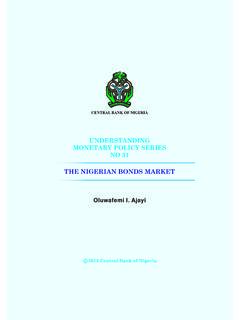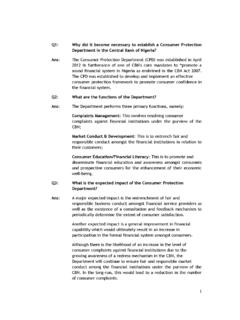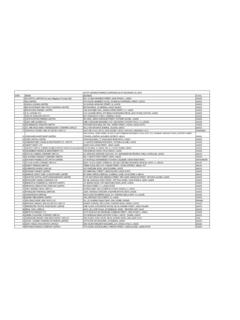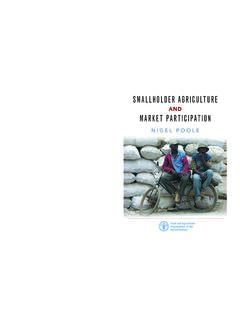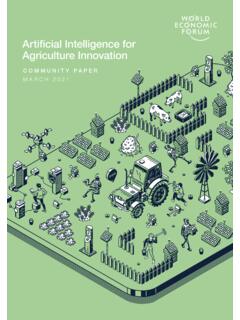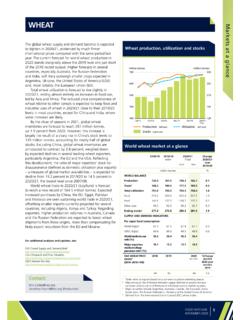Transcription of CHAPTER ONE BACKGROUND - Central Bank of Nigeria
1 Classified as Confidential Anchor Borrowers Programme Guidelines (Non-Interest) CHAPTER ONE BACKGROUND The Central Bank of Nigeria (CBN) in line with its developmental function established the Anchor Borrowers Programme (ABP). The Programme which was launched by President Muhammadu Buhari (GCFR) on November 17, 2015 is intended to create a linkage between anchor companies involved in the processing and small holder farmers (SHFs) of the required key agricultural commodities. The programme thrust of the ABP is provision of farm inputs in kind and cash (for farm labour) to small holder farmers to boost production of these commodities, stabilize inputs supply to agro processors and address the country s negative balance of payments on food.
2 At harvest, the SHF supplies his/her produce to the Agro-processor (Anchor) who pays the cash equivalent to the farmer s account. The Programme evolved from the consultations with stakeholders comprising Federal Ministry of Agriculture & Rural Development, State Governors, millers of agricultural produce, and smallholder farmers to boost agricultural production and non-oil exports in the face of unpredictable crude oil prices and its resultant effect on the revenue profile of Nigeria . Objective The broad objective of the ABP is to create economic linkage between smallholder farmers and reputable large-scale processors with a view to increasing agricultural output and significantly improving capacity utilization of processors.
3 Other objectives include: Increase banks financing to the agricultural sector Reduce agricultural commodity importation and conserve external reserves Increase capacity utilization of agricultural firms Create new generation of farmers /entrepreneurs and employment Deepen the cashless policy and financial inclusion 1 Classified as Confidential Reduce the level of poverty among smallholder farmers Assist rural smallholder farmers to grow from subsistence to commercial production levels. Targeted Beneficiaries The financing shall be targeted at smallholder farmers engaged in the production of identified commodities across the country.
4 The farmers should be in groups/cooperative(s) of between 5 and 20 for ease of administration. Identified agricultural Commodities The targeted commodities of comparative advantage to the State shall include but not limited to: Cereals (Rice, Maize, wheat etc.) Cotton Roots and Tubers (Cassava, Potatoes, Yam, Ginger etc.) Sugarcane Tree crops (Oil palm, Cocoa, Rubber etc.) Legumes (Soybean, Sesame seed, Cowpea etc.) Tomato Livestock (Fish, Poultry, Ruminants etc.) Any other agricultural commodity as requested by off-taker and approved based on viability by the CBN from time to time.
5 Eligible Participating Financial Institutions (PFIs) The financing shall be disbursed through any of these Non-Interest Financial Institutions (NIFIs): Non-Interest Deposit Money Banks Non-Interest Windows of Deposit Money Banks; Development Finance Institutions (DFIs) through a non- interest window; Non-Interest Microfinance Banks (NIMFBs). The Anchor This shall be private large-scale integrated processors, aggregators, commodity associations etc who have entered into an agreement with the SHFs to off-take the harvested produce at the agreed prices or as may be reviewed by the PMT.
6 State Governments may act as Anchor upon meeting the prescribed conditions. 2 Classified as Confidential Inputs Suppliers The input suppliers shall submit expression of interest letter to the office of the PMT for consideration and issuance of local purchase orders by the Anchor which shall be ratified by the PFI. The Facility Amount Financing amount for each SHF shall be arrived upon from the economics of production agreed with stakeholders. The fund shall be provided from the Micro, Small and Medium Enterprises Development Fund (MSMEDF).
7 Rate of Return Rate of return under the ABP shall be guided by the rate on the MSMEDF, which is currently at 9% (all inclusive, pre and post disbursement). The PFIs shall access based on a structure compliant with non-interest banking principles at 2% from the CBN, and finance at a maximum of 9% (all inclusive). Tenor The tenor of financing under the ABP shall be the gestation period of the identified commodities or as agreed with stakeholders not exceeding 60 months. Settlement Financing granted to the SHFs shall be settled with the harvested produce that shall be mandatorily delivered to the Anchor at designated collection center in line with the provisions of the Agreement signed.
8 The value of the produce to be delivered must cover the financing principal and return. 3 Classified as Confidential CHAPTER TWO Management and Administration of the ABP There shall be two models of administration of ABP based on the anchor arrangement namely: Private Sector-led and State windows. Under each model, a Project Management Team (PMT) shall be established to coordinate the implementation of the programme. Private Sector-led Window The PMT under the Private Sector-led Window shall be constituted as follows: Head DFO, CBN Chairman Representatives of Anchor Firms Co-Chairman Programme Manager, State agricultural Development Programme (ADP) Representatives of participating Banks Representatives of farmers associations Nigerian agricultural Insurance Corporation (NAIC) Operating Models under the Private Sector Window The following models are operated under the private-sector window 1) Prime Anchor Model 2) Private Sector Model 3)
9 NIRSAL Guarantee Model The models vary operationally in the roles and responsibilities of the stakeholders as follows: STAKEHOLDERS OPERATIONAL ROLES AND RESPONSIBILITIES -PRIME ANCHOR MODEL - CBN: a. Ratifies the Economics of Production (EoP) b. Validate farmers list for participation c. Carries out monitoring of project to ensure compliance d. Bears 50% credit risk on outstanding amount in default - PFI: a. Processes financing request based on number of farmers /Hectares validated and the ratified EoP. b. PFI Management approves financing to Anchor as primary obligor c.
10 Receives collateral from Anchor to cover 70% of total financing amount d. Ratifies the supply of input as requested by the Anchor e. Manages the project through its life cycle f. Bears 50% credit risk on outstanding amount in default 4 Classified as Confidential - Anchor: a. Provides list of farmers for participation in the project b. Provides collateral cover to the Bank for financing amount requested c. Primarily responsible for supply of quality inputs and Services through LPO issuance d. Manages the project through its life cycle -PRIVATE SECTOR MODEL - CBN: a.
